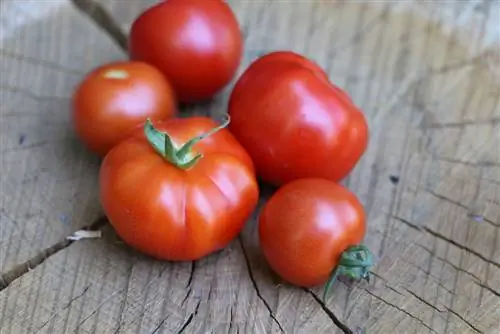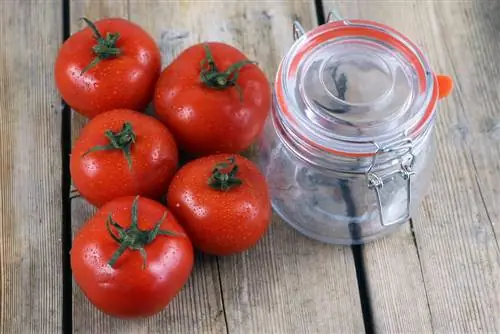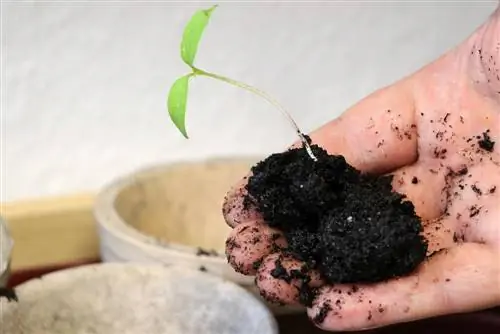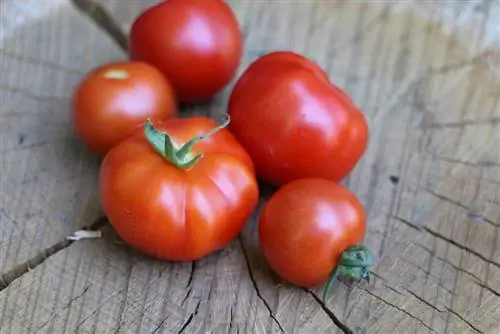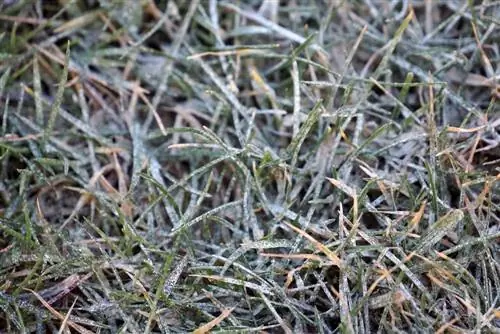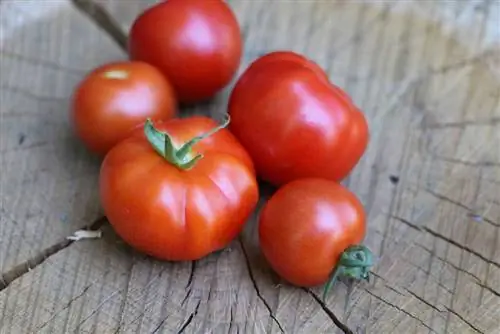- Author admin [email protected].
- Public 2023-12-17 03:39.
- Last modified 2025-01-24 12:45.
Helpful soil organisms, water-holding ability and fertility of the substrate - the primary rock flour has an all-round positive effect on the soil and the garden and is therefore a wonderful fertilizer not only for tomatoes. In order to be able to offer tomatoes and other plants the full spectrum of benefits, the primary rock flour must be used and dosed correctly. Even with suitable combinations and other possible uses, the correct procedure is crucial. Hobby gardeners will find out below what they need to pay attention to.
Species
When it comes to primary rock flour, a basic distinction is made between alkaline and acidic types. Depending on the pH value of the soil and the requirements of the plant, the appropriate choice can be made and balanced with the rock dust. In addition, primary rock powder can be the ground product of a mineral group or a mixture of different rocks.
Contained substances
Primitive rock flour is ideal as a tomato fertilizer because it contains a variety of different minerals and trace elements. Below:
- Boron
- Calcium
- Iron
- Potassium
- Cob alt
- Copper
- Magnesium
- Manganese
- Sodium
- Nickel
- Zinc
The exact composition can of course differ due to the different species, which is why it should be selected depending on the soil condition and pH value.
Tip:
Before using the primary rock powder as tomato fertilizer, carry out a soil test or submit samples for a soil analysis. This provides information and helps with the selection.
Advantages
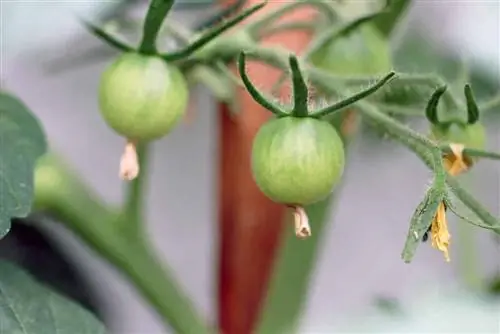
Since primary rock flour is a natural substance that combines numerous components, it is a balanced fertilizer and does not pollute the soil when used correctly. Even a one-sided oversupply is hardly possible with stone powder. But the advantages are diverse. The product supplies the soil and the living creatures in it with essential substances and thus promotes a he althy balance. Since the minerals and trace elements are released slowly and gradually from the weathering primary rock powder, they supply plants long-term and evenly. The other advantages are as follows:
- Promotes rotting in the compost
- Promotes beneficial organisms in the soil
- It neutralizes and binds odors
- Easy to use
- Economical dosage possible
- Slightly balancing effect on the pH value of the soil
- High content of plant-available substances
- Can be used all year round and in all weather conditions
- Improves the water holding capacity of the soil
Application options
As already mentioned several times, primary rock flour can not only be used to fertilize tomatoes, but can also provide other good services to the plant.
Used dry, in what is known as dusting, the primary rock powder forms a powdery film on the leaves. This has a preventive effect against caterpillars, snails and aphids as well as fungal infections and can also be used to combat these diseases and pests. The primary rock powder also binds and neutralizes odors, which is why it is an ideal addition to plant manure and compost. If the soil is very dry and infertile, a treatment with stone dust is recommended. This makes it possible to achieve the desired crumb structure and thus reduce the necessary pouring effort. Apart from that, fertilizer applications can be gradually reduced in frequency and quantity.
Fertilization
The primary rock powder is particularly beneficial as a fertilizer for tomato plants because it effectively prevents specific and frequently occurring deficiency symptoms - such as blossom end rot - and does not distort the taste. In addition, the plants and yield benefit from the improved water storage capacity of the soil. When fertilizing tomato plants with primary rock powder, it is recommended to add the product to the irrigation water beforehand. This means it can be dosed precisely and does not create dust. However, if you want to spread stone dust to prepare the bed, you can also do this dry. However, you will have to wait for a windless day for this to happen. For tomatoes we recommend the procedure described as follows:
- Dust the bed well with stone dust in the previous autumn or winter. The soil should look powdered. The recommended dose is around 100 grams per square meter. The primary rock dust must then be raked in on the surface.
- When sowing or planting seedlings, dust the seed groove or planting hole again.
- Four weeks after sprouting or plants, fertilize for the first time, giving one heaped teaspoon per plant.
- Depending on needs and soil conditions, one teaspoon, i.e. around 15 grams, can be dosed per plant every two to four weeks.
- If necessary or as additional protection, a combination with plant manure is also possible. The primary rock powder is added directly to the manure and administered together with it.
When fertilizing tomatoes using irrigation water, it is recommended to put the required amount of primary rock powder in a bucket and fill it up with water accordingly. This mixture is stirred well and then distributed evenly with a ladle or a cup. This approach makes sense, especially when there is wind, and is usually more consistent.
Tip:
Overfertilization is also possible with primary rock powder, so it is better to use it sparingly and as needed. For this purpose, a soil analysis is again advantageous.
Plant protection
As a plant protection product, primary rock powder is only used dry, i.e. dusted. The leaves are powdered on the top and bottom to prevent snails, caterpillars and aphids from eating and to prevent fungal infections. To do this, the primary rock powder is placed in a powder syringe or a dusting can and distributed on the slightly damp leaves. Dew, rain or the use of a plant sprayer with fine droplet distribution ensures that the flour sticks to the leaves of the tomato plant. If you don't want to invest in a powder syringe, you can use a large, soft brush or a small hand brush. Dipped into the primary rock powder, this allows precise application with little loss. Powdering is also possible as a preventive measure if there is an existing infestation and is often necessary several times during growth. However, under no circumstances should it be done while the tomatoes are flowering, as this can make fertilization more difficult or even impossible.
Be careful when handling
Whether dusting on the leaves, dusting the soil or before mixing with water - handling the primary rock powder is a very dusty affair and anything but he alth-promoting. Whenever it is used, at least a breathing mask should be worn. Safety glasses and careful handling are also necessary. In addition, children and pets should be kept away during use. Since wind can arise or change at any time, no one should be unprotected in the garden or even in the surrounding area during application.
Conclusion
Primitive rock flour as a fertilizer and pesticide for tomatoes is productive, natural and he althy. Versatile and easy to use, the flour does not pollute the environment or soil and has proven itself in the long term thanks to its numerous benefits for the soil, organisms and plants. However, caution is advised when using it.

